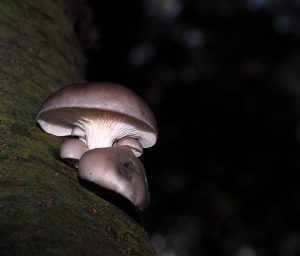
October 20, 2016, by Hannah O'Regan
Missing mushrooms: foraging for fungi in the archaeological record
Mushrooms are a common part of modern human diets, yet they are rarely considered from an archaeological perspective. As soft-bodied organisms they readily rot, so are very rarely found on archaeological sites. Search for academic papers on archaeology and fungi and you are most likely to find articles discussing how microscopic fungi eat wall paintings and artefacts, and there are very few examples of mushrooms in relation to diet. The most famous exception is Oetzi ‘the Iceman’ from the Copper Age of Italy who had two species of bracket fungi in his possession. Neither of these are terribly edible but one could have been consumed as a vermifuge (something to kill parasitic worms), and both can be used as tinder to light fires.
A new collaboration between Dr Hannah O’Regan from the Department of Archaeology (UoN), Dr Angela Lamb (CEG/BGS) and Dr David Wilkinson, (LJMU) set out to consider this lack of mushrooms from another angle – as they are made of protein, can we see evidence of fungus consumption by looking at the stable isotope composition of people in the past?

The edible oyster mushrooms, Pleurotus ostreatus, in Mere Sands Wood Nature Reserve, Lancashire.
Examining their chemistry
Stable isotopes of a range of elements are widely used in archaeology and ecology to estimate the food source used by an organism – for example plants, herbivores and carnivores tend to show different stable isotope chemistries. We found that very few studies have been performed specifically on edible mushrooms, so we collected and analysed fungi from the wild in North West England. We combined our results with published data to see how variable isotopes of carbon and particularly nitrogen can be. It turned out to be that fungi are extremely variable, with nitrogen values ranging from those you might find in legumes up to those you’d see in a polar bear!! Edible mushrooms had a smaller range, but were still very varied. This means that a human – or other animal – feeding on lots of mushrooms could, depending on which species they are eating, have a bone chemistry that could lead people to think they were being carnivorous. But the main thing this work showed was how little we know about fungi and the archaeological record. There is still much to learn!
This work is published online in the Journal of Archaeological Science. It is free to access until December 20th 2016 at the following link: http://authors.elsevier.com/a/1Tzmc15SlTZQ2F
No comments yet, fill out a comment to be the first

Leave a Reply